Express your creativity on paper by drawing a garden layout before bringing it to life. This guide shows you step-by-step methods for designing, tweaking, and perfecting your optimal garden layout.
Creating A Garden Layout On Paper Made Easy
When creating an impressive garden layout on paper, it’s easy to combine many ideas. However, optimizing it for seamless functionality while staying aesthetically pleasing is where talent shines.
A well-thought-out garden design plan is a roadmap to transforming your outdoor space. Think of it as writing a novel draft before editing a final copy and publishing the completed book.
In this guide, you’ll learn how to draw a garden plan and visualize your final look before digging into the ground.
It includes tips on making all elements work for your space, from the colors to plant types, available space, and seasonal patterns.
Beginners and experienced gardeners can explore these easy garden layout ideas and enjoy the process.
Gather Your Essential Garden Planning Tools
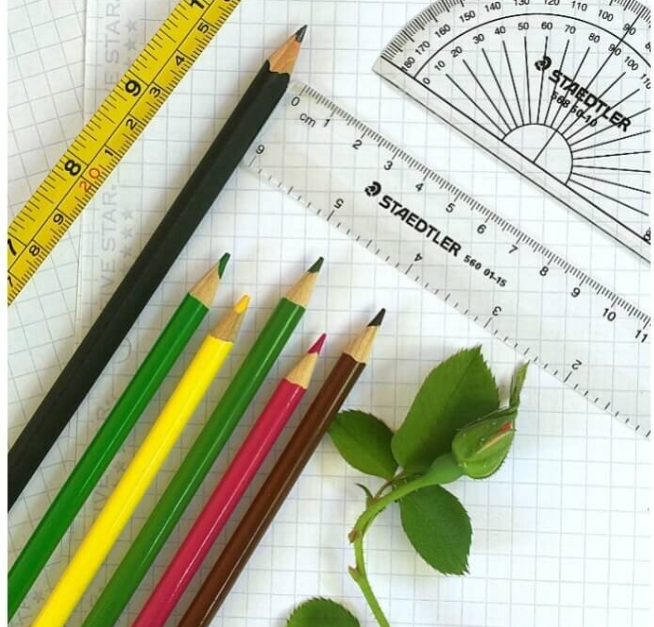
Start by collecting key garden layout drawing tools like graph paper, pencils, colored markers, a ruler, and a measuring tape to ensure accurate and organized layouts.
- Graph Paper: Making a graph paper garden design helps you maintain scale by accurately representing your garden’s space and sticking to its dimensions.
- Pencil and Eraser: From elementary school to date, this trusty combo allows you to make adjustments and corrections as your ideas shape.
- Colored Pencils: This would ass fun to your process, but colored pencils help you highlight specifics and distinguish between sections and plants.
- Measuring Tape and Ruler: Stay within scale and draw proportionate designs using rulers and measuring tapes.
These garden planning tools are available online via apps and websites for more tech-savvy gardeners. So, whether you prefer a traditional or hi-tech solution, you’re covered.
Define the Purpose and Function of Your Garden
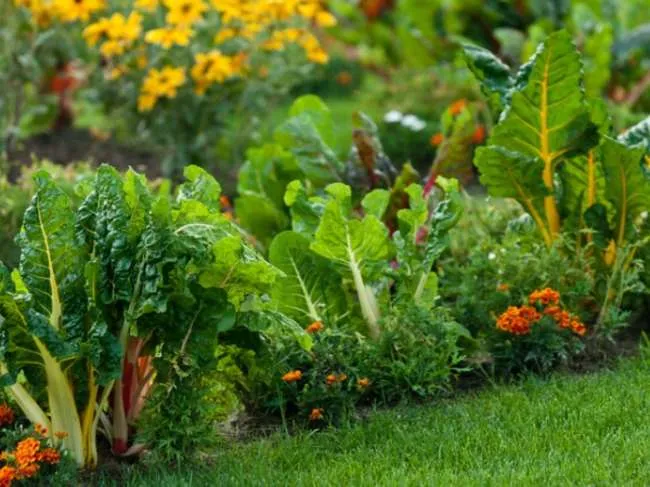
Before drawing your garden layout ideas, you must clarify your goals. Are you designing a garden for vegetables, flowers, relaxation, or a hybrid of two or more functions?
Knowing what you want helps to shape your design, layout zones, and select features that fit your garden’s purpose.
Whether planning a vegetable garden, flower garden, or relaxation yard, you must assess your available space.
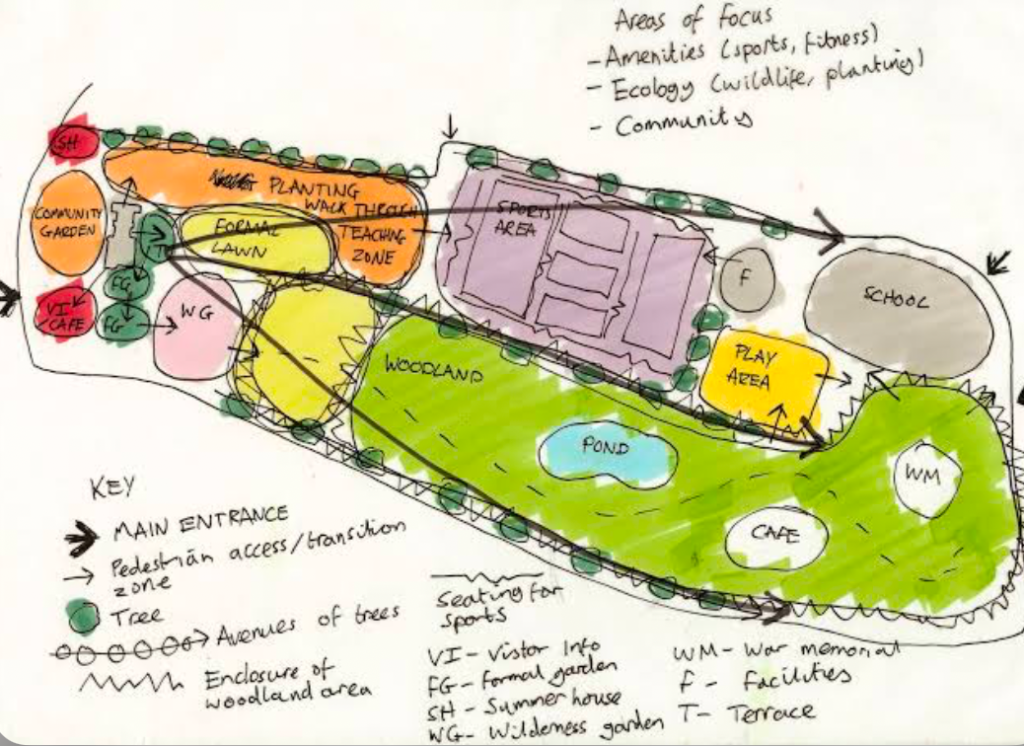
Use these garden zoning tips to harmonize your designs:
- Mark existing features from trees to patios and fences so that you can integrate your garden instead of fighting against them.
- Next, determine your lawn soil’s quality, drainage system, and sunlight availability to know what plants would best thrive in that environment.
Jot down your observations on your sketch pad to remember this information while designing.
Measure Your Space and Map Existing Features
Use designated garden tapes when measuring garden space for accuracy. Also, don’t forget to identify existing elements like patios, fences, and trees when you map your garden layout.
The best backyard garden planning layouts adapt to their environment. You’d save more time and money designing around the existing elements than knocking them down to bring your dream alive.
Select Plants That Suit Your Garden’s Conditions
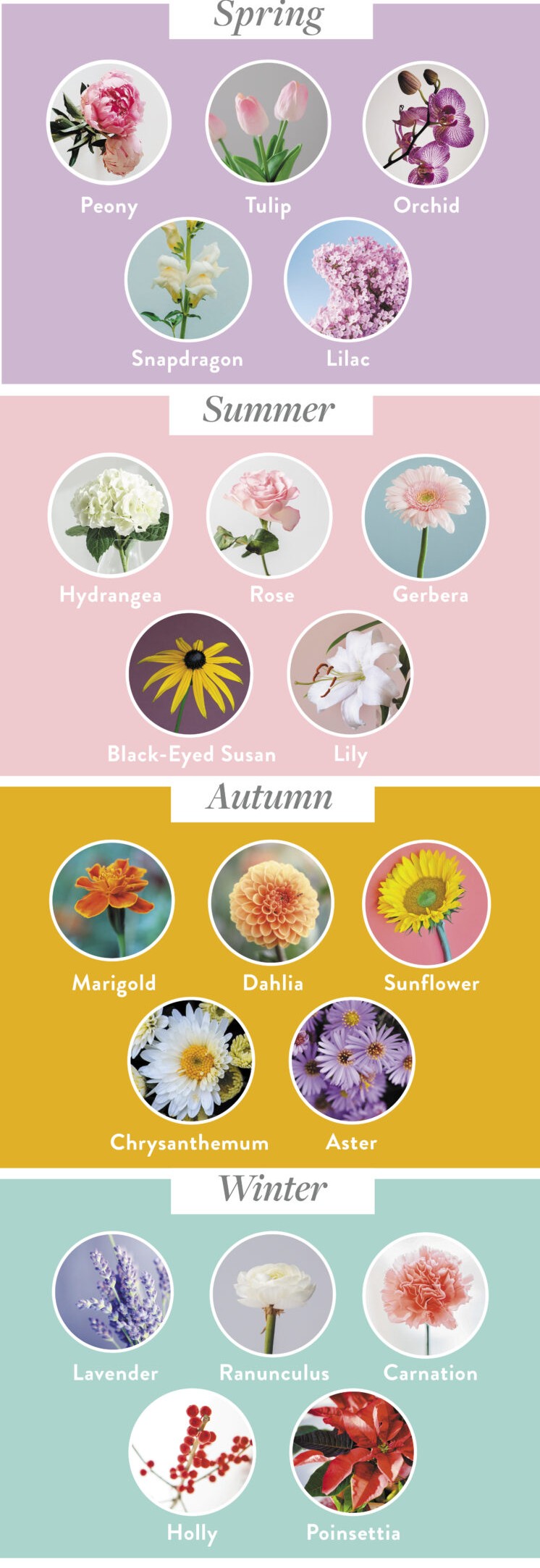
Choosing plants for garden planting goes beyond personal preference, as other elements interfere with their growth and maintenance.
Use this plant placement guide to find the most compatible vegetable, flower, or relaxation garden species.
Climate Conditions
Choose plants based on the climate to make maintenance easier. First, differentiate between cool-season and warm-season plants, then determine what climate applies in your region.
Sunlight Exposure
Garden sunlight planning covers growth patterns, plant sizes, and shapes. Remember to think about how each plant looks in maturity, not just when they’re seedlings to ensure sun-lovers get more exposure than shade-tolerant species.
Soil Type
Determine the soil type to know what plants thrive best in the area.
Author’s Note: For diagnosing nutrient deficiency, knowing your soil type, and preparing your soil for planting, check out the more accurate Mail-in Lab MySoil Soil Test Kit or the Convenient At-Home Rapitest Soil Test Kit!
Maintenance Needs
Know the maintenance needs for ensuring healthy growth and aesthetic balance in your design. For example, you can create a mixed landscape of perennials and annuals for a symbiotic relationship.
Choose Your Garden Layout Style
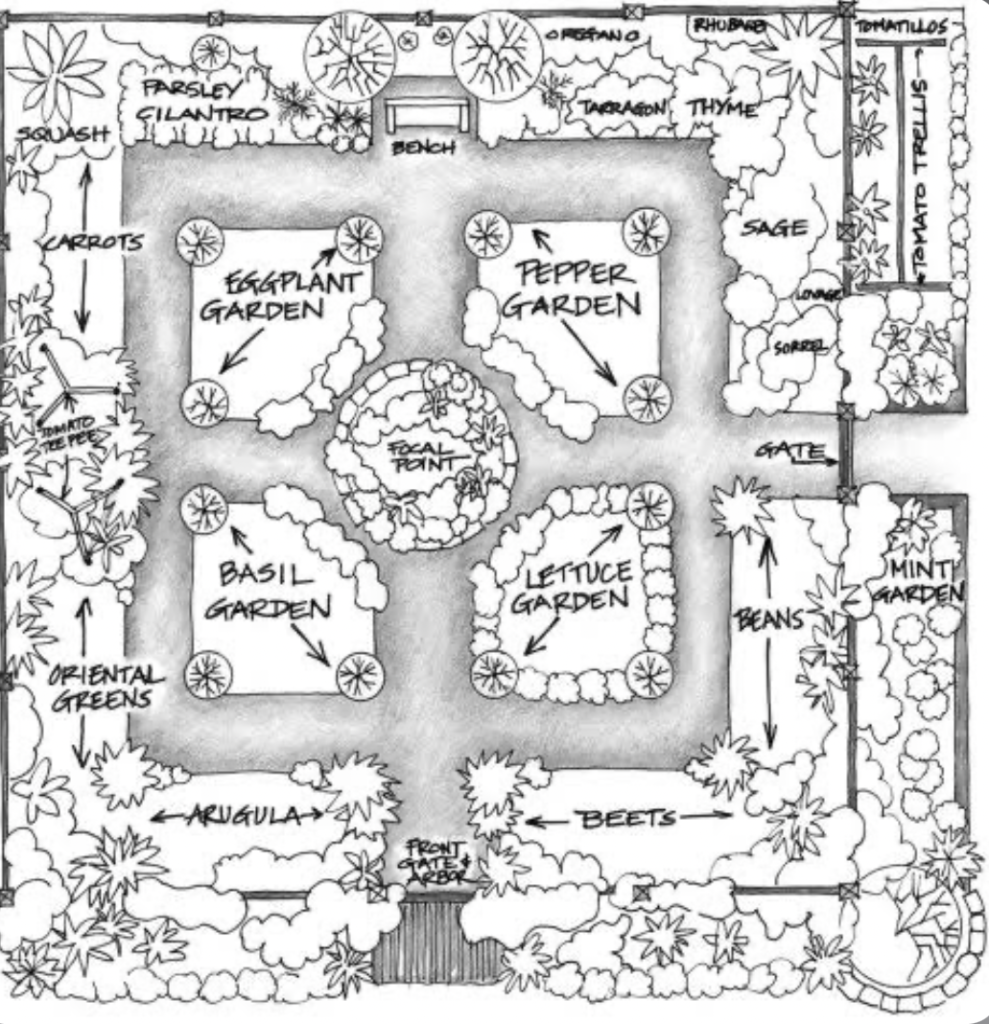
Exploring garden layout styles ignites your creativity as you search for one that resonates with you. You can decide between having a formal or informal garden before choosing a specific theme.
Formal vs Informal Garden
Garden layouts may be formal and classic with structured arrangements or informal with a more relaxed approach that doesn’t focus on symmetrical plantings.
Choose a garden style that aligns with your taste, whether it’s the traditional approach or a vibrant mix of textures.
Garden Styles
- Cottage Garden: Mix of textures and colors in a raised bed.
- Sustainable Garden: If you cherish an eco-friendly system, draw a permaculture garden design that leverages plant relationships.
- Minimalist Garden: As a gardener with a modern theme, it’s best to use the traditional symmetrical design of clean lines and intentional space usage.
Find a style that aligns with your taste and maintenance preferences.
Sketch Your Layout Step-by-Step
Alright, that’s enough theorizing. It’s time to put pencil to paper and bring your garden blueprint design to life. If you’ve never done this, relax, and follow this step-by-step garden plan for success.
Step One: Basic Outline
Start by sketching a basic garden layout on your graph paper.
Step Two: Mark Boundaries
Note every existing structure in your garden and mark the boundaries within which you’ll plant your vegetation. Label each planting zone clearly.
Step Three: Incorporation of Fixed Elements
Start incorporating the fixed elements like trees, paths, and garden beds. Remember to integrate them with the structures in Step Two.
Step Four: Fill With Plants
Once you’ve dealt with the fixtures, you can fill the empty areas with plants, seating pots, and pathways.
Step Five: Make Adjustments
Feel free to move things around if they don’t fit seamlessly.
Step Six: Leave Room for Updates
Consider seasonal changes by making room for the path and future layout updates.
Plan for Pathways, Water, and Sunlight Zones
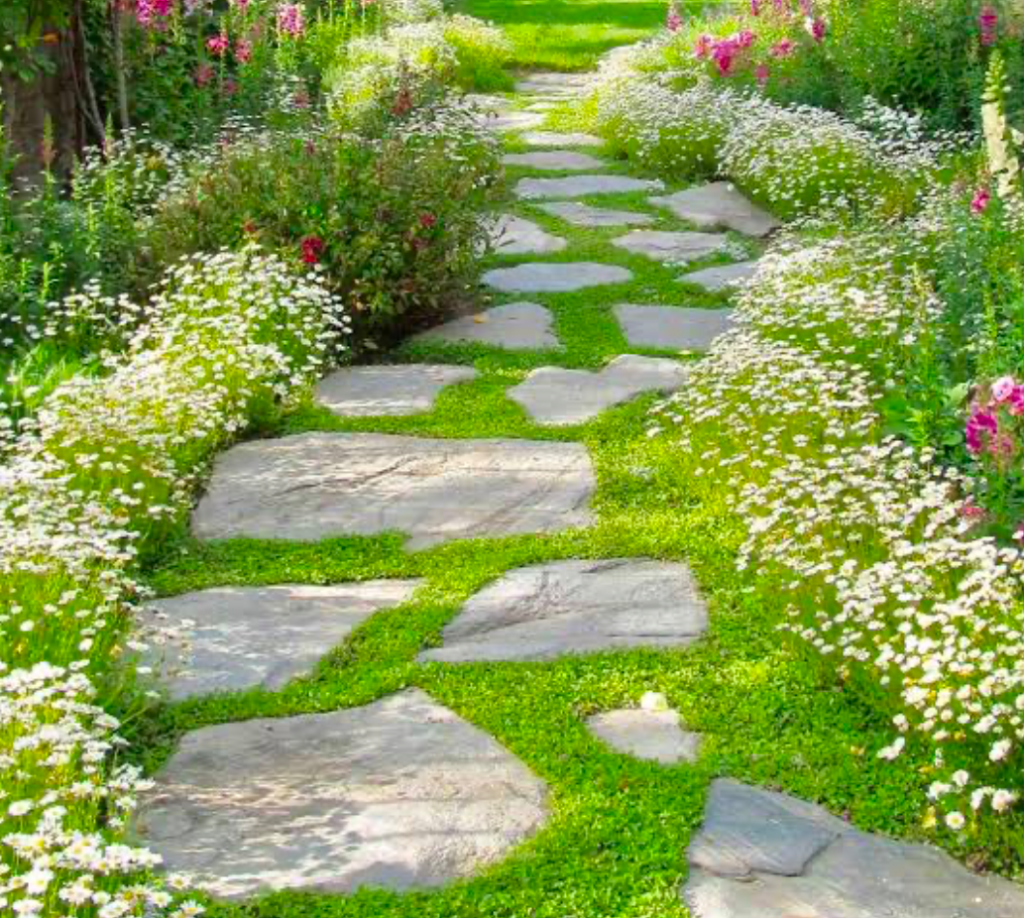
Functionality is the bedrock of a well-thought-out layout. Making room for paths and across points that allow you to move through your garden without trampling on the grass is essential.
Pathways
When drawing your garden pathway design, using natural materials like gravel, stepping stones, and much to complement your lawn’s style is best. It should be wide enough to accommodate everyday gardening activities like moving wheelbarrows with tools and walking during maintenance.
Irrigation
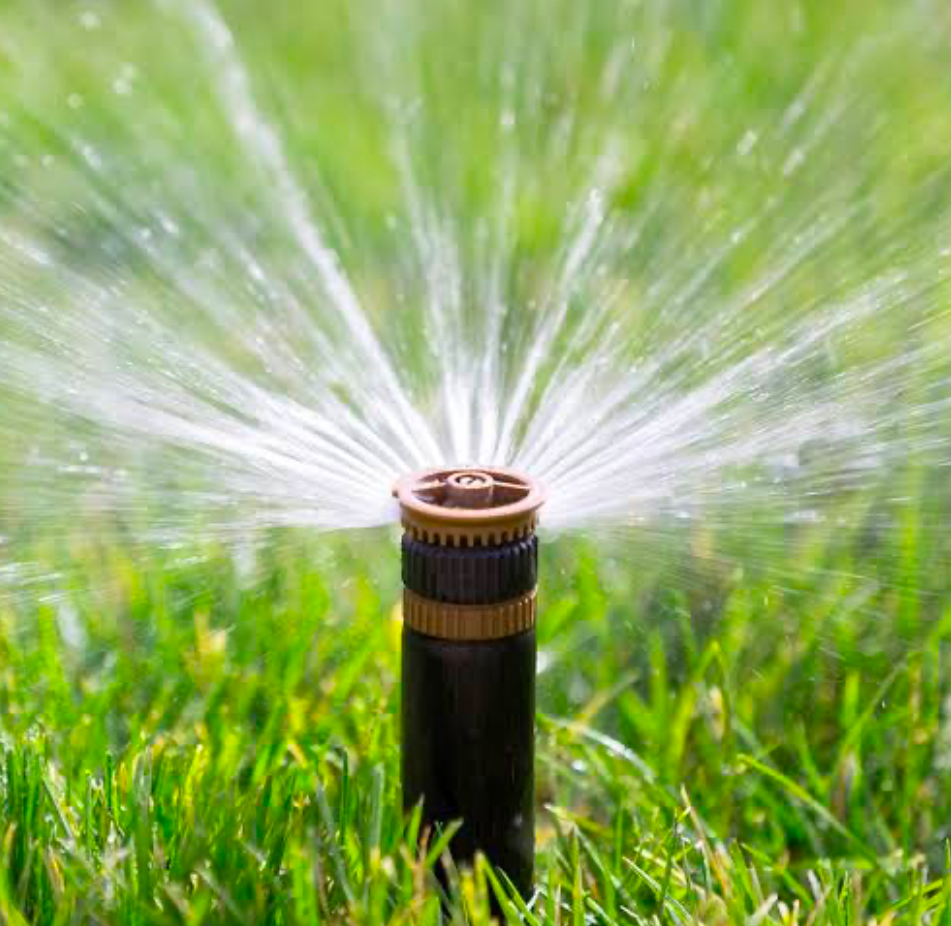
Your garden irrigation layout should prevent waterlogging during Spring/Summer and garden maintenance for efficient watering.
Water is a lifeline for any garden, so don’t overlook this aspect.
You can choose between a rainwater catchment system and drip irrigation to conserve water properly.
Water Features
Adding water features to the layout is another under-appreciated means of enhancing your garden’s appearance.
Consider the placement carefully, whether a pond or fountain, because your water feature attracts wildlife or brings tranquility.
Ensure they’re in a position for easy access during maintenance.
Sunlight Access
Note sun/shade zones for optimal plant placement. Put sun-loving plants in your garden’s sunlight zones, while shade-tolerant vegetation can be under them or in less sunny spots.
Trellises and Pergolas or large trees are great shades for low-light species. You can also use existing structures like fences, tall buildings, and trees to shade smaller plants.
Avoid Common Design Mistakes

Designing your garden layout and anticipating its realization can be exhilarating to the point where you’ll fall into making common garden planning mistakes. However, with careful planning, you’ll avoid these pitfalls.
Longterm Accomodations
Most gardeners focus on the present and forget to plan for future seasons and growth. Your garden as a living entity needs you to make seasonal adjustments to keep it looking fresh all year round. Choose plants that bloom in different seasons to maintain visual interest. You can also use slow transitions, like moving some potted plants indoors during winter, to preserve them.
Overcrowding
Overpacking your garden with plants leads to competition and stunted growth. You can avoid overcrowding in gardens by adhering to classic spacing rules.
Classic spacing in garden layout requires at least one to two inches wide gaps between plants in rows and columns so everyone thrives.
Poor Drainage
Neglecting the drainage system provision leads to waterlogging that drowns your plants and causes marshy soils. It would also encourage pest infestation and plant rot, so create a good drainage system.
Sunburns
Improper plant placements lead to sunburns and stunted growth from reacting to the climate. Scroll up for instructions on shading with plants and natural fixtures.
Improper Maintenance Provision
If you don’t carve out pathways for movement, you’d inevitably trample on your plants during maintenance and ruin all your hard work.
Design a layout that allows easy access to pruning and weeding to avoid headaches later.
Finalize and Bring Your Layout to Life
It’s time to finalize the garden plan after sketching, designing, and tweaking your layout.
The last steps in converting a garden layout to a real garden are the following:
- Double-check your design by revisiting the layout and comparing every scale to the real measurements.
- Make adjustments for seasonal changes.
- Create physical boundaries outdoors using pegs and rope lines.
- Prep the soil for planting.
- Gather the tools for garden planting preparation according to your plan.
- Translate your paper sketch into a thriving garden.
Use Printable Templates and Digital Resources
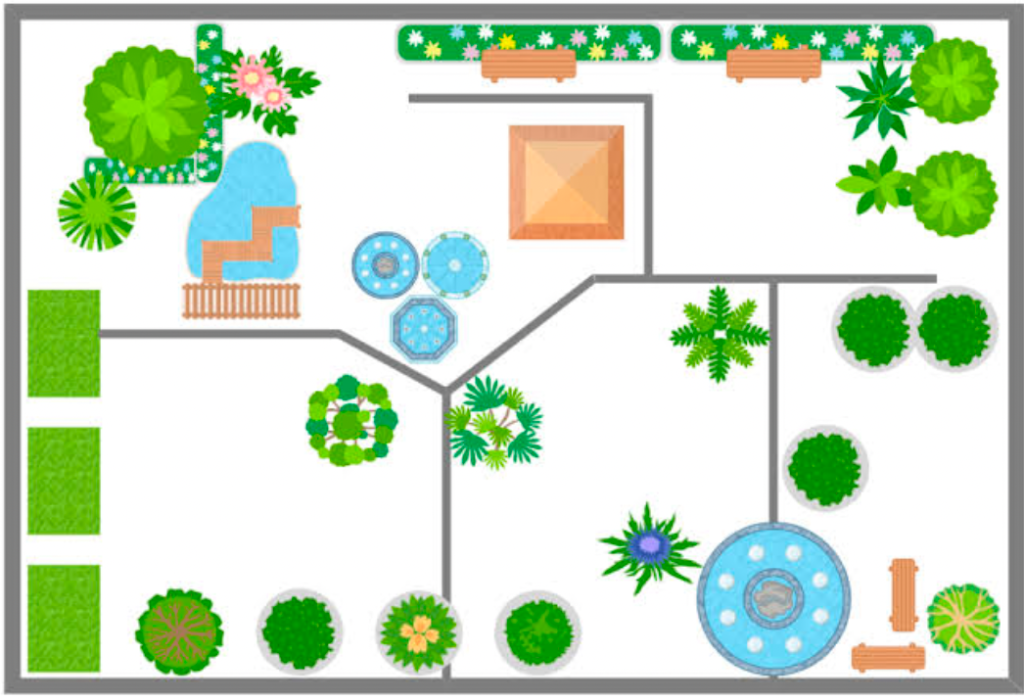
Feeling inspired but need a little more help with your garden layout template? You can access resources online to streamline your garden planning with digital garden design tools.
Download a printable garden planner template, sign up on design apps, and use planning worksheets to simplify your layout and visualize the final design.
Conclusion
After reading this guide and following the instructions, you would agree that designing a paper garden layout benefits are unending. It saves you time and money because an easy garden blueprint helps you make changes on paper before translating a perfected layout into real life.
Remember to adapt with seasonal changes and make room for future maintenance if you want to plan your garden effectively.
Also, don’t overwhelm yourself with too many ideas. Take your time and feel free to use templates online while following this garden design made easy guide.

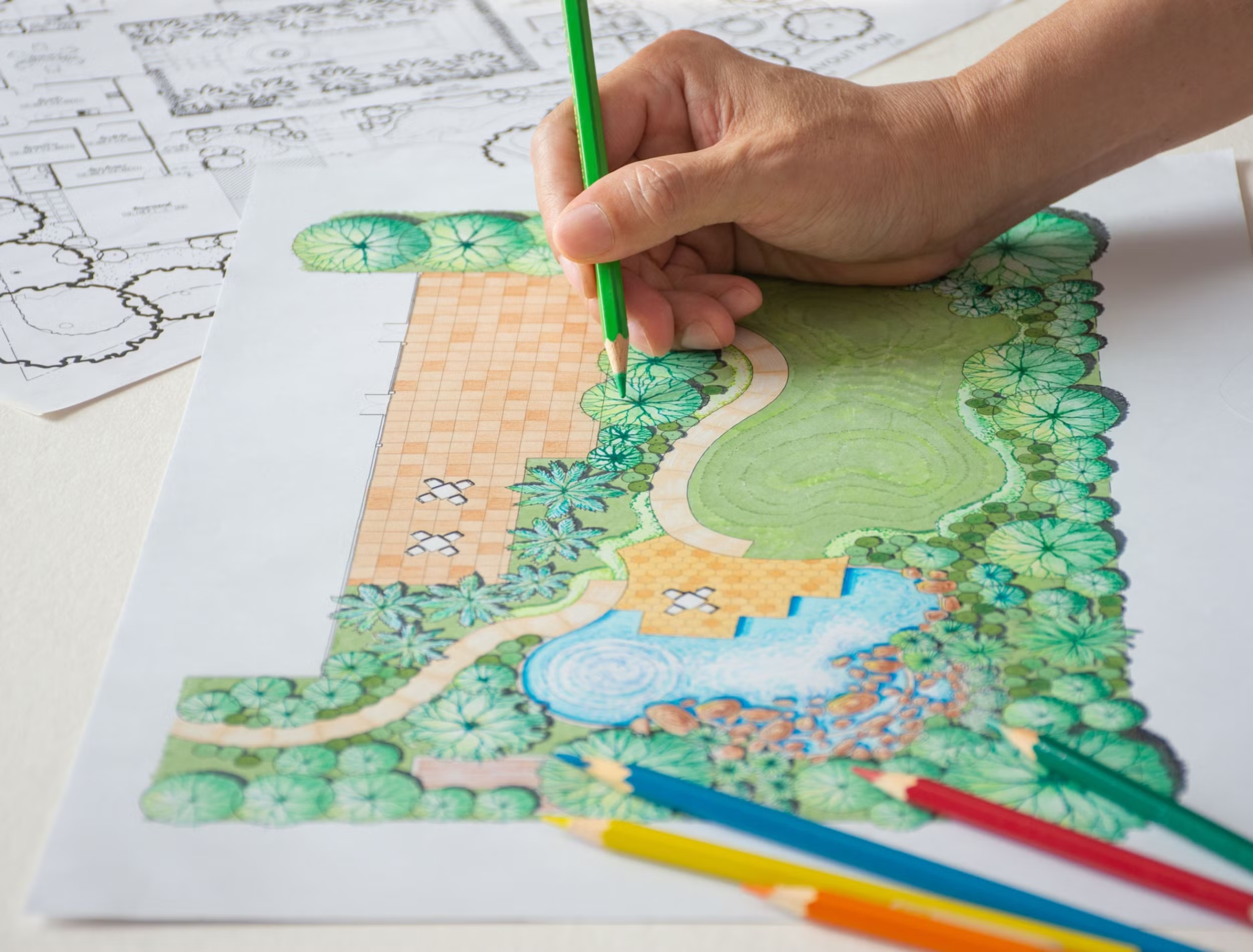

1 thought on “Garden Layout Planner: Free Grid Templates + Sun Map”